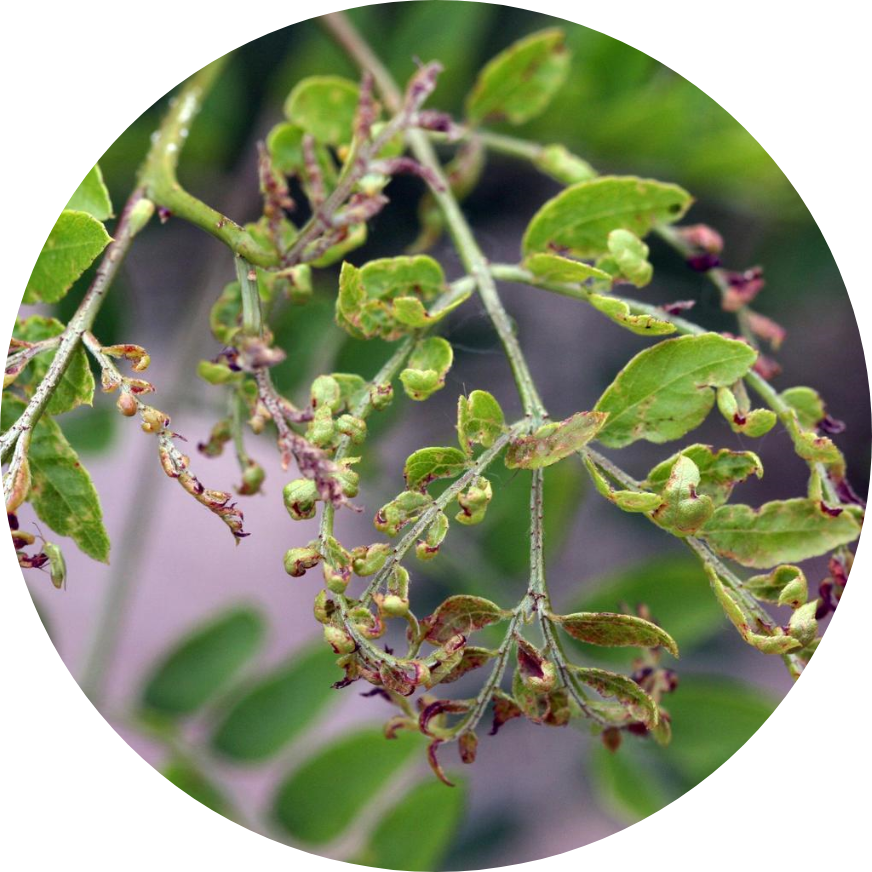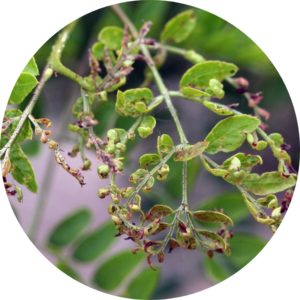Honey Locust Plant Bug

A pest in this country since the 1950s, the honeylocust plant bug usually emerges in May to feed off the new growth of honeylocust trees. Their appearance in this country seems to have coincided with the introduction of thornless honeylocust cultivars to nurseries and landscapes, which allowed the pests to spread. The plant bug is hard to notice, both because of its green coloring (which allows it to blend in to the honeylocust’s new growth) and its size (adults usually measure around 3/16 of an inch long).
Honeylocust plant bug nymphs cause the most serious damage, as they feed on newly sprouted leaves upon hatching. Damage to trees can range from brown or yellow spots on leaves, stunted leaf growth and, in extreme cases with heavy infestation, defoliation. Because the main period of activity is right after hatching, any action to combat an infestation must be taken at this time. Once they’ve reached the adult stage, the plant bugs become harder to kill and should be gone by the end of June regardless.
For chemical treatments, insecticidal soap and horticultural oil can be applied right after the honeylocust plant bug nymphs first appear in the spring. More conventional insecticides may also be applied. Foliage and bark should be completely covered during the application process.
There are also a few non-chemical options when it comes to honeylocust plant bugs. Nymphs can be sprayed off leaves with a high-pressure stream of water, and planting green-leaved cultivars that are less susceptible to infestation than the yellow-leaved variety will help to keep the pests away.

